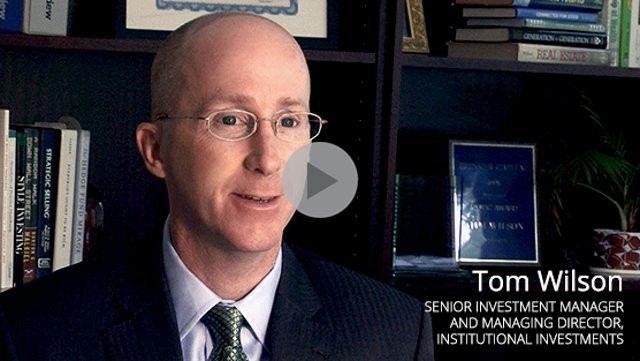Institutional Investments
Post on: 2 Июнь, 2015 No Comment

An institutional investor is an organization that trades large volumes of securities on behalf of a collection of individual investors. Institutional investors include commercial banks, savings and loan associations, investment trusts, insurance companies, pension funds, and, most notably in recent years, mutual funds.
Such an organization offers individual investors two primary benefits. First, by trading in aggregateor utilizing the collective financial resources of many individual investorsthe institutional investor may realize tremendous economies of scale in securities trades. For example, such high-volume trades typically qualify the institutional investor for discounts on commissions and "soft dollar" rebates from brokerage firms that find their business very profitable.
Second, the financial largesse of the assets of the investment firm enables the firm to retain highly qualified money managers, or professional investment advisers, who may devote more time and attention to thoroughly investigate investment opportunities than any single investor could afford.
Institutional investment firms have their origin in investment trusts that came into being in European financial centers, principally London, Amsterdam, and Paris, during the 18th and 19th centuries. Such firms later formed in other financial centers, such as New York, Chicago, Hong Kong, and Frankfurt, and today may exist in virtually any city in the world.
The growth of institutional investors was fueled to a great extent during the 1980s by growth strategies of firms that sought new sources of investment capital. By marketing new, more customized investment vehicles and services to smaller investors, institutional investment firms brought the benefits of participation in large financial markets to investors who previously lacked the financial resources necessary for cost-effective participation. As individuals, they lacked sufficient capital to enter certain markets or profit fully from trades in those markets. As members of investment collectives, however, various entry and operating costs could be widely distributed and reduced.
It is estimated that securities trading by institutional investment firms now accounts for about 90 percent of all trades in financial markets. This does not represent the waning of the individual investor, but merely a trend in which individual investors participate in markets through institutional investment intermediaries rather than as direct investors.
According to one study, firms that managed $100 million or more in securities controlled 51 percent of the capitalization of U.S. stock markets at the end of 1996, up from just 26.7 percent in 1980. Another 1998 finding by the Conference Board found that the 25 largest institutional investors controlled a growing share of the U.S. equity market, some 19.7 percent of total outstanding equities in 1997, up from 16.7 percent in 1996. Among all institutional investors, the 25 largest institutions accounted for 40.9 percent of all equities managed by institutional investors.
It has been suggested, particularly after the October 1987 market collapse, that the influence of institutional investors over markets is too strong. The collapse in 1987 resulted in a decline in the Dow Jones Industrial Average of more than 500 points, representing devaluation of about 20 percent.
At the time of the collapse, market values for shares were generally agreed to be inflated, and a correction was necessary. Nevertheless, the actions of institutional investors were governed largely by computer programs, set to sell in increasing volumes as market prices declined. Therefore, a small number of highly sensitive programmed trades caused the entire community to bail out of the market all at once. Market prices fell, but far beyond what was necessary for a proper correction. Regulatory safeguards were subsequently enacted to blunt the effect of programmed trading by institutional investors.
updated by David P. Bianco ]
FURTHER READING:
Blommestein, Hans J. and Norbert Funke. "The Rise of the Institutional Investor." OECD Observer, June/July 1998, 37-42.

"Institutional Investors Continue to Gain Control of U.S. Corporations." Directorship, October 1998, 14.
Kover, Amy. "The Perfect PriceEvery 15 Minutes." Fortune, 15 March 1999, 208.
McNamee, Mike. "A Big Break for Big Caps?" Business Week, 11 January 1999, 34.
Palmer, Jay. "Going Soft." Barron's, 28 September 1998, 14.
Vickers, Douglas. Economics and Ethics: An Introduction to Theory, Institutions, and Policy. Westport, CT: Greenwood, 1997.
Wipperfurth, Heike. "Full Steam Ahead for Institutional Equity Unit at Shaw." The Investment Dealers' Digest, 8 February 1999, 11.














